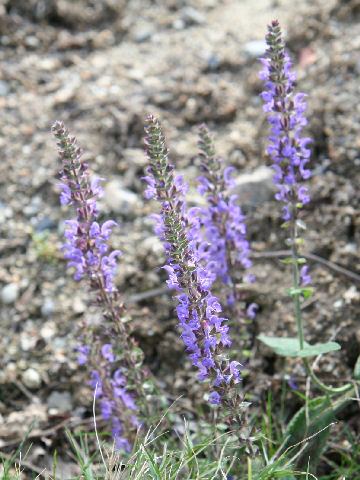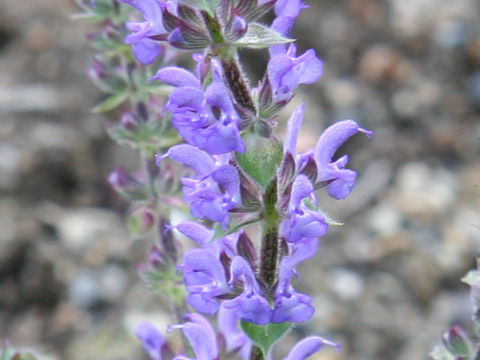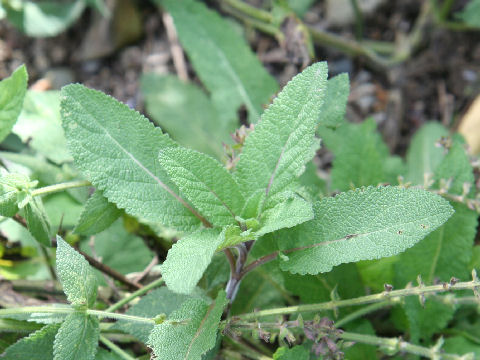 |






|

|
中国の西部、新疆ウイグル自治区からカザフスタンやギルギスタン、ロシアに分布しています。砂地の草原や森林の河岸などに生え、高さは70センチほどになります。茎は直立し、葉は卵形から卵状披針形です。葉の縁には不規則な鋸歯があります。6月から10月ごろ、茎頂に総状花序から円錐花序をだし、青紫色から紫色の唇形花を咲かせます。乾燥した根茎は、「新疆丹参(Xinjiang-Danshen)」と呼ばれ血流を良くする生薬として漢方に利用されます。中国名は「新疆鼠尾草(Xinjiang shu wei cao)」です。
|

|
シソ科アキギリ属の多年草で、学名は Salvia deserta。英名はありません。
|

|
The Salvia deserta belongs to Lamiaceae (the Mint family). It is a perennial herb that is distributed from Xinjiang Uygur Autonomous Region in western China to Kazakhstan, Gilgistan and Russia. This herb grows on sandy grasslands and forest riverbanks, and is about 70 cm high. The stems are upright and the leaves are ovate to ovate-lanceolate. The edges of the leaves have irregular serrations. From June to October, racemes or panicles are borne on the shoot apex, and bluish-purple to purple lip-shaped flowers come in bloom. The dried rhizome is called "Xinjiang-Danshen" and is used in Chinese medicine as a crude drug to improve blood flow. The Chinese name is "新疆鼠尾草" (Xinjiang shu wei cao).
|

|
京都市左京区「京都府立植物園」にて、2006年10月25日撮影。
|




